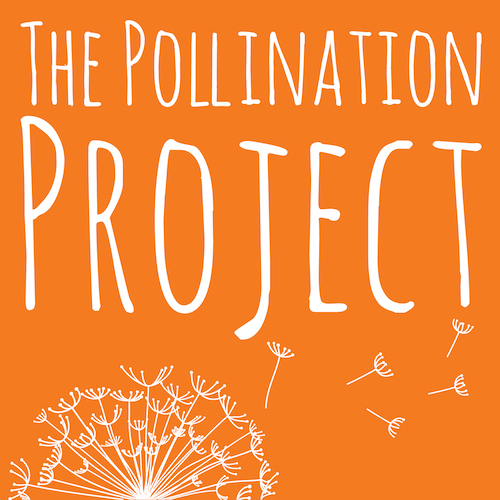In Sri Lanka, the Red Slender Loris has lost 80% of its population in the last 200 years and they continue to decline, The IUCN Red List of Threatened Species.
“I am worried about putting people or animals in a box because everything is meant to be the way they are and we shouldn’t try to alter it,” Dr. Smitha D. Gnanaoliu, Scientist Specialized in Slender Lorises.
As human beings, we often forget that we belong to the vast family of animals and that we are equal to every sentient creature on our planet. We allow the amazing opportunity to understand and learn from other species to slip away leaving so many mysteries concealed as well as misconceptions about wonderful creatures. But not Dr. Smitha D. Gnanaoliu, a remarkable scientist who has dedicated her life to studying the Slender Loris, a nocturnal primate endemic in India and Sri Lanka from which much was unknown to the world. Furthermore, her work opened a new field for the study of nocturnal animals in their habitat and for the entrance of females to do scientific research or work in the Indian rainforest.
A Unique Child Born in the City of Palaces
 Smitha was a unique baby, she was never afraid of the dark and loved all kinds of animals, even though she never had a pet. Her mother used to tell her how a stray cat came to visit every day and cuddled in the crib right next to her to fall peacefully asleep as she held him between her little arms.
Smitha was a unique baby, she was never afraid of the dark and loved all kinds of animals, even though she never had a pet. Her mother used to tell her how a stray cat came to visit every day and cuddled in the crib right next to her to fall peacefully asleep as she held him between her little arms.
“I have always loved animals,” recalls Smitha. “I was never scared of animals or the dark, I’ve walked around the house at night like it was daylight since I was a baby. My father, my brothers, and I have always been natural to animals.”
Smitha was born in Mysore, India, also called the City of Palaces; which was the capital of the Mysore Kingdom from 1399 to 1947. She was the firstborn in her generation, both from her mother’s and father’s family, and the oldest of her two brothers. However, she didn’t stay in Mysore for long because her family had to move around India due to her father’s work as an executive in a shoe company called BATA India Ltd. However the one thing that Smitha could always count on no matter where her family settled was finding animals to befriend.
“I managed to find animals everywhere I lived,” says Smitha. “I never had a pet because my mother doesn’t like pets. But I didn’t miss it because I used to befriend all stray dogs, cats, lizards and even rats. I used to sit outside our home to observe the animals and wait for them to come to me. They would always come. I like the animals to be in their natural habitats, not confining them for my pleasure. I enjoy their presence. I like to coexist with animals, not domesticate them. You just have to look out the window and at least one animal will come to you, anyone can enjoy the animals in their habitat as they are.”
Following her passion for all living creatures, Smitha got a bachelor’s degree with three majors: Chemistry, Microbiology, and Zoology at the Mysore Maharani College as well as a master’s degree in Zoology at the University of Mysore, both in the city of Mysore, India. She also obtained a Ph.D. in Behavioral Ecology of Malabar Slender Loris in Western Gaths at the University of Madras in Chennai, India, and became the first female scientist to study the ecology of the Malabar Slender Loris in its natural habitat.
The Random Encounter That Became Life-changing
After obtaining her master’s degree, Smitha worked as a program officer at the Center for Environmental Education on climate change for a year. Then, she got married and moved to the South of India where she joined the Indian Institute of Science to work on projects on human-wildlife conflicts across India. There, fate would put her face-to-face with a creature that would change the path of her life forever.
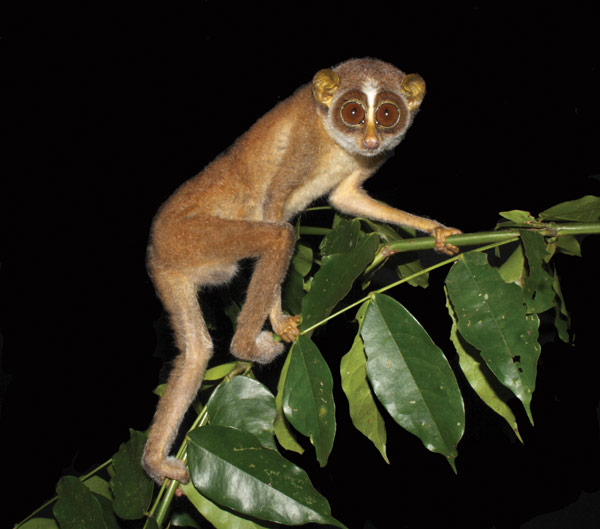
“I work on the slender lorises because I fell in love with these animals,” says Smitha. “Back in 2011, I was working at the Indian Institute of Science in Bengaluru, India, and I was volunteering with a team of wildlife rescuers. I used to rescue small mammals, especially fallen newborn squirrels from the trees – to get them into good health – and then make a soft release so they could get back into the wild. One day, somebody called me from the mathematics department and told me they had received two animals that looked like rats but didn’t know which animal they were. They had fallen in the slush and they didn’t know what to do with them. So I sent a few volunteers there and picked up these two animals to bring them in. A co-researcher and I cleaned them up, and she said she thought they were slender lorises. They were so tiny that we thought they were babies, so we gave them formula but they didn’t like it. Then we fed them bananas but they didn’t like them either. Then they started to grab the insects that flew around the bananas, so we gave them a cockroach and they immediately ate it. That is how we knew they were adults although they were so tiny. One of them was in very bad shape – it had pneumonia – so we rushed them to a very good rehabilitation center where they helped them. They said they were adults but they had no other information about them.”
Both lorises were released back into the wild after their recovery.
Throughout the brief time that Smitha took care of those lost slender lorises, she found out that they were nocturnal animals because of their sleeping habits and that they ate insects, but she couldn’t find any other information about them.
“After that, when I spoke to a primatologist, I found out that there was another subspecies of slender loris that no one had ever studied because it was too tiny – as small as a leaf – and it could be found only in the rainforest. It is not easy to go into the rainforest because there are elephants, tigers, and many dangerous animals. It is also quite dense so it is not easy to find them,” explains Smitha. “I didn’t care about a degree. I didn’t care about the dangers. I just wanted to go there and research these amazing creatures for 6 months. So I asked him to guide me and help me find support from the institute as well as permits from the government. He said: ‘Fine, but you are going at your own risk’.”
A Primitive and Mysterious Primate
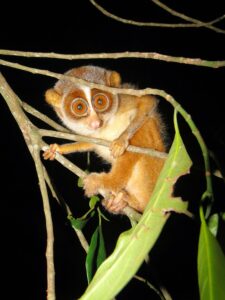 A halo of mystery surrendered the Slender Lorises for centuries. These creatures were a species that lacked study and information in India until the 1990s, especially because of their small size, nocturnal habits, difficult-to-reach habitat, and semi-gregarious social behavior, according to the article A review of research on the distribution, ecology, behavior, and conservation of the Slender Loris Loris lydekkerianus (Mammalia: Primates: Lorisidae) in India.
A halo of mystery surrendered the Slender Lorises for centuries. These creatures were a species that lacked study and information in India until the 1990s, especially because of their small size, nocturnal habits, difficult-to-reach habitat, and semi-gregarious social behavior, according to the article A review of research on the distribution, ecology, behavior, and conservation of the Slender Loris Loris lydekkerianus (Mammalia: Primates: Lorisidae) in India.
In India, two subspecies of Slender Loris have been identified: The Mysore Slender Loris which has a grayish-brown color and can weigh around 275 grams as adults, and the Malabar Slender Loris which is reddish and can weigh around 180 grams as adults.
“The Slender Lorises are primitive primates,” explains Smitha. “Their closest cousins are the lemurs from Madagascar. The slender lorises are found in India and Sri Lanka, nowhere else in the world. They are very small, they fit right into your arm. Some 22 centimeters for the Mysore Slender Loris, and the Malabar Slender Loris is even smaller, the size of a leaf, about 20 centimeters. When I began my work, the Slender loris listed in the Indian Forest Act was Loris tardigradus, which is the red slender loris endemic to Sri Lanka. Getting permits was difficult as I was listing Loris lydekkerianus malabaricus, which did not exist on the list. They live in dense canopies and they come out only at night. The lorises are solitaires, are highly territorial and they can not jump.”
The Grey Slender Loris is considered a near-threatened species that has lost 20 to 25% of its population and is still in decline mainly because of the loss of its habitat in India and Sri Lanka, according to The IUCN Red List of Threatened Species.
Furthermore, the Red Slender Loris became considered a threatened species in Sri Lanka by The IUCN Red List of Threatened Species in 2015. In this country, 80% of their population has declined in the last 200 years and they continue to decrease. Only 2,650 red slender lorises are reported to remain in the wild and they are expected to decrease at least 20% in the next 10 years, mainly because of the 97% loss of their habitat.
The Search for the Malabar Slender Loris
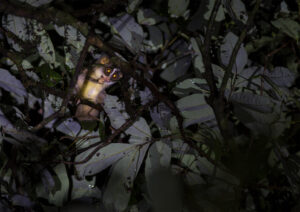 At 27 years old, an innate curiosity and love for animals motivated Smitha to pursue the adventure of her life. She obtained permission to go into the rainforest in the Aralam Wildlife Sanctuary in Kannur District, Kerala village of Kanichar, India, to research the Slender Loris. Although the Forest Department had headquarters, Smitha had to stay in a village outside the forest because she was a female and they did not have a spare room just for women and it was not considered ideal that she shared a room with men.
At 27 years old, an innate curiosity and love for animals motivated Smitha to pursue the adventure of her life. She obtained permission to go into the rainforest in the Aralam Wildlife Sanctuary in Kannur District, Kerala village of Kanichar, India, to research the Slender Loris. Although the Forest Department had headquarters, Smitha had to stay in a village outside the forest because she was a female and they did not have a spare room just for women and it was not considered ideal that she shared a room with men.
“I went into the rainforest, but it was not easy,” says Smitha. “I had never been to rural India in my life. I was born and brought up in urban India. When I went to see the lorises for the first time I couldn’t see my hand in front of me, it was so dark. I used a red light to see and the first days it gives you a headache because you are not used to it. My permission was only for 2 days. I went with only one researcher who had located where the lorises could be found in high densities. We couldn’t see any lorises but I was able to see other animals like the sambar deer, mouse deer, and porcupines. I found myself liking the beauty of the night where the world is quite different.”
Smitha was not about to give up on her search for the slender lorises. She applied for a 3 years permit to return to the Aralam Wildlife Sanctuary and – while she was waiting for the authorization – she went to research at Sirsi in North Karnataka.
“I got a 3-month permit to go to Sirsiy, and that was like landing in India from 200 years ago,” recalls Smitha. “It was an entire forest and inside you would find pockets of villages here and there. For us to get to one village we had to ride about 35 kilometers through the forest. There was just one bus that used to go in during the morning, and one bus that would return in the evening. I asked my husband to come with me because women are not allowed in these places alone.”
Since Smitha and her husband are Christians, they were a minority in that area where ancient culture prevailed so they were labeled as untouchables.
“You have the major village where the Brahmans, really clean cast vegetarians are, and the minor village where you have the non-vegetarians. So the outer village people are not supposed to come into the main village and they are treated as untouchables. Because I was educated and I came with a reference from a very high-profile person in the village – who offered me help because he loved my work – they allowed me to live in a small house with my husband, but we were not allowed in many parts of the house. We could only stay in our room and go to the bathroom which was outside the house. The food was offered to us at a distance.”
The families from the outer villages live on very low incomes, they are usually hunters because they don’t own land or animals. Smitha asked one of the hunters to come along with her to explore the rainforest but even that was a difficult task.
“I used to take a hunter with me to explore the rainforest but I could not enter his village. To call him I used to throw stones at his house so he could come out. I had to learn to throw stones at a long distance. That was so funny,” says Smitha. “Our host from the village brought some of his friends to help us look for the lorises but we hadn’t found any. One night, I was very tired from searching, it was around 2 am and I just sat under a tree and, suddenly, – after one hour – this guy came running to me and he said: ‘Madam look up! Look up!’. I looked up and one loris was looking right down at me. I was amazed. It was love at first sight.”
Advocating for the Lorises and Opening Doors for Women
After the successful sighting of Smitha’s first Malabar Slender Loris, what was supposed to be a few days of research turned into 10 years of scientific study and advocacy for these amazing animals.
“In the beginning, the Forest Division found it very difficult because I was the first woman to work there and they even called me Sir. because they didn’t have the terminology to call me otherwise,” remembers Smitha. “Gradually they accepted me and they even used to cook for me, they used to take care of me and slowly after I spent a few years there they started accepting women forest officers. Two women who were accepted to the Forest Division came to see me and told me: ‘Mam, it is because of you that we have the guts to come to this forest. No woman has come to this forest before you’.”
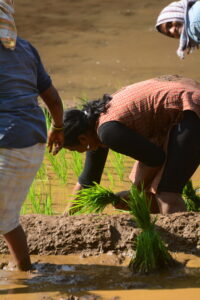 Smitha also risked her life more than once during her work in the rainforest, aside from coming face-to-face with tigers and wild elephants. One day while studying the lorises in the Aralam Wildlife Sanctuary in Kerala, India, she was swept away by a rip current while crossing a river at midnight.
Smitha also risked her life more than once during her work in the rainforest, aside from coming face-to-face with tigers and wild elephants. One day while studying the lorises in the Aralam Wildlife Sanctuary in Kerala, India, she was swept away by a rip current while crossing a river at midnight.
“There was a river that separated the village and the forest and there was only a hanging bridge to connect them. When there was no water on the river we crossed the river path under the bridge. But when it rains in the mountains within seconds you will have a flash flood – which happens very unexpectedly. One night, within the first 6 months of my long-term permit, the bridge was broken and they had not repaired it. So I crossed through the river because it was quite shallow but when I was coming back around midnight the water rose within seconds. I lost my balance and I was washed off by the current. Fortunately, there was a big boulder and I was able to hold on to it, although I hurt my knees badly. The Forest Department was still awake and they used to look out for me. They would see my light and check that I returned from the forest. When they didn’t see my light coming back and heard the flash flood, they came rushing to find me. They threw me a rope and pulled me out. My knees were in very bad shape because the cartilage had tipped off. I stayed in the village while all the villagers left because there was a big storm coming but I didn’t know. Because of the storm, the roof of my house flew off, and all the rain was coming in. There was only one room that had a little bit of roof left and I managed to put all my instruments and data there to keep them safe. There was water everywhere and I was sleepy because I was on painkillers. I didn’t know what to do and I finally passed out. The last thing I recall is that my mother came and rescued me. I don’t know how she knew about the storm, maybe she got worried because I hadn’t come home so she hired a Tuk Tuk from Mananthawady – the city on the mountain – came to the village and took me back home. I don’t know how long I had passed out. But I didn’t get scared. I went back.”
At the beginning of her journey, the officers from the Forest Department used to call Smitha a “crazy woman”. After looking at the numerous ribbons she tied to the trees to mark information about where she spotted lorises they used to think her name was Lorenz because she always spoke about the Loris and it sounded similar. After a while, they began to think she even had magical powers.
“Every villager had another story about me,” remembers Smitha. “The Forest Development Department believed very strongly that I had magical powers because, in my visits to the forest, elephants who had killed people would stand in front of me and do nothing, none of the animals would harm me because they knew me from walking in the same paths for so long. But the people from the Forest Department thought I had gotten my magical powers from the lorises. So that got me thinking… Why the lorises? I talked to people and I found out that lorises were considered magical animals, associated with bad Oman and evil. Some believed that when a woman looked at a loris they would become barren or that it would give people bad luck. I followed the trail of beliefs up to Bangalore where I found out that lorises were used in black magic. I found a rescue and rehabilitation center where they had live lorises who were victims of black magic. Lorises were traded highly in India for black magic. This was very easy to do because when they get scared they freeze so you can take the loris and put it under your clothes and no one will know. They are taken to China, Thailand, and many places. No one knew this was happening because the lorises were unknown. Authorities used to write down the trade as being a lemur or a slow loris or a weird monkey-looking animal, or a weird rodent. We couldn’t find anything in the records and I wanted to know the trade route and that is how I landed in Bhimgad Wildlife Sanctuary in Karnataka which nobody knew. Trafficking was very high over there.”
A 10-Year Collaboration With The Pollination Project
When Smitha knew that slender lorises were being trafficked, tortured, and killed for black magic and other myths, she decided she wanted to work at the Bhimgad Wildlife Sanctuary in Karnataka to help create a mind change among the community and protect these wonderful creatures.
“I found out about The Pollination Project and applied for a seed grant,” remembers Smitha. “When I received the first grant I was very excited and surprised. I wasn’t sure I was going to get the grant because my project was unlike any other funded by TPP. This was 10 years ago and TPP has been an integral part of my life since then and we have become very close over time.”
With the seed grant from The Pollination Project, Smitha was able to create an awareness campaign to promote the conservation of the rainforest and bring up the love for their land and the wildlife in the villagers.
Since then, Smitha has studied the lorises in over 17 different places in India, through 4 states: Kerala, Karnataka, Tamil Nadu, and Maharashtra; leading different teams of scientists and volunteers.
Smitha was able to put the Malabar Slender Loris into the Forest Protection Act, to open up a world of nocturnal work for future generations to study any kind of animals, change people’s perception to understand that lorises are not evil beings, and influence the IFS Officer and previous Principal Conservator of Forets and Chief Wildlife Waarden, Tamil Nadu, Dr. Shekhar Niraj, from the Tamil Nadu government to convert Karur Wildlife Sanctuary into the first Slender Loris sanctuary in the world.
Among some of her accomplishments, Smitha has received the Women Scientist Fellowship (WOS-A) from the Department of Science and Technology, Ministry of Science and Technology, and other prestigious grants such as the Primate Action Fund from The Margot Marsh Biodiversity Foundation.
She is a commissioned member IUCN SSC Primate Specialist Group: South Asia Section 2021-2025; a Capacity Building Consultant and Wildlife Expert for Developing of a National Human-Wildlife Conflict Mitigation Strategy and Action Plan (HWC-NAP) with Indo-German Technical Cooperation Project on “Human-Wildlife Conflict Mitigation in India’ is commissioned by the German Federal Ministry for Economic Cooperation and Development (BMZ); a Research Affiliate, Wildlife Information Liaison Development (WILD), Coimbatore, Tamil Nadu; a Wildlife Consultant with One Health program, a joint venture between Kerala Veterinary and Animal Sciences University (KVASU) and United Nations Development Programme (UNDP), India “Green recovery pathway for India: transitioning towards a green and resilient COVID-19 recovery”; a Research Scholar at Loyola College in the University of Madras, Chennai; a Research Partner with Nocturnal Primate Research Group at Oxford Brookes University and Little Fireface Project; Executive Member of the Association of Indian Primatologists; among other.
Nowadays, Smitha is the mother of an 8-year-old boy. She still co-guides people who study the lorises and works with the IUSC to make best practices for conservation.
“The Slender Lorises were one of the least known primates in the world,” says Smitha. “I am glad that people can now understand that they are just another animal as equal, beautiful, and in need of protection as any other animal like tigers or lions.”
Join Us
If you are inspired by this work and have an idea for a project that addresses an issue that you are passionate about, we’d like to invite you to submit an application and together we will build a better, more compassionate future!
If you would like to support the work of more heartivists like this around the world, please visit our donation page and be a part of the change today!
